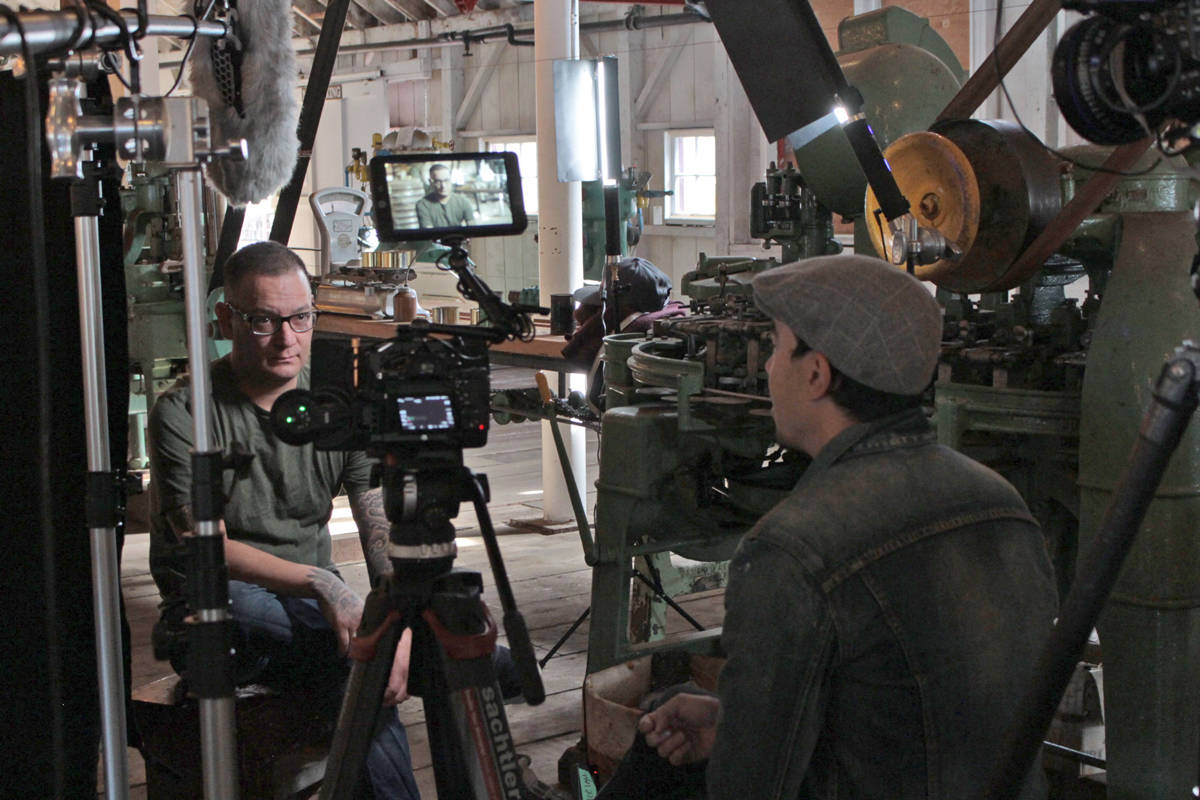On the rocky beach across the harbour, Shane Chartrand lays halibut on top of an open fire, some lucky diners and a film crew surrounding him, watching as the chef cooks up a fresh meal.
It’s one of the three days Chartrand is cooking and filming in Prince Rupert and Gingolx (Kincolith) for his soon-to-be released show Red Chef Revival. He’s travelling around B.C. and Alberta, meeting local chefs and people, making dishes that explore the place’s history through traditional Indigenous recipes and more modern influences.
“We all connect with food,” Chartrand said after touring the North Pacific Cannery. “Yes, we can all sit around our dinner table and eat food and have a good time. That alone is fellowship and that’s going to be a story on its own, but we gotta go further. We all need to remember how holistic food is. It’s medicine. It’s us, it’s who we are, it’s what we make it.”
READ MORE: The flavours of All Native
Chartrand is from the Enoch Cree Nation and based in Edmonton, where he was recently the first Indigenous chef to win the Gold Medal Plates Canadian Culinary Championships. His mother is Mi’kmaq and British, and his father is Métis, so his childhood was made up of meals influenced by each of his parents’ backgrounds. His family would eat salmon one day, and tea and toast the next.
“That’s what inspired me to look into Indigenous ingredients and figure out what Indigenous food is,” he said.
On the North Coast, Red Chef Revival goes beyond the dish as the film crew follows Chartrand from a flat-bottom boat crashing through the waves with seasoned fishermen to the North Pacific Cannery to an open fire on a rocky beach.
Each dish Chartrand makes on the journey is inspired by what’s around him, the people he meets and the stories they tell him. At the North Pacific Cannery, Chartrand learns of how the workers, mostly First Nations people, Japanese and Chinese, began to consider chow mien as an Indigenous food on the North Coast.
“All that stuff is so mind-blowing to me, because I would never associate chow mien, ever in an Indigenous community, [as] Indigenous food,” he said.
On the first day, Chartrand helped make a seal broth with a family in Gingolx. While in culinary school, he was taught not to constantly stir a broth, but that’s exactly what the traditional recipe called for. Mixing releases the proteins, making the broth cloudy — the opposite of what Chartrand was taught in school.
“That seal meat and that seal meat broth will sit with me for a long time,” he said.
That constant stirring of the broth, and learning more about eating seal as a way of life, is something Chartrand wouldn’t have thought of if he hadn’t visited these communities first-hand.
“The times of listening need to come back more often. Around that fellowship, around dinner tables, around food, we can all resonate with food,” he said. “That’s what I think this series does. It gives people a little bit more of an understanding of thought.”
The show is expected to be out on Telus Optic and YouTube in 2019.
READ MORE: Rupert’s got taste
keili.bartlett@thenorthernview.com
Like us on Facebook and follow us on Twitter
